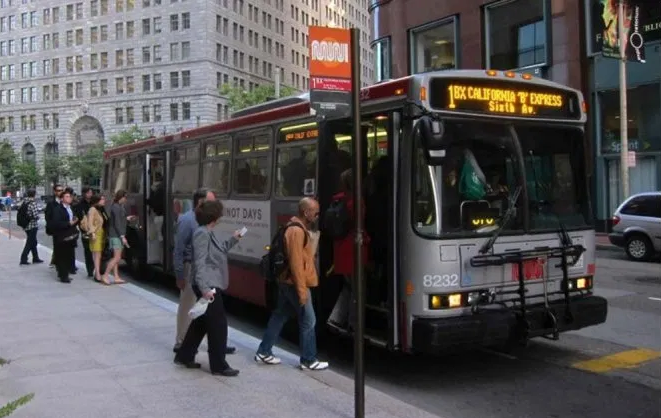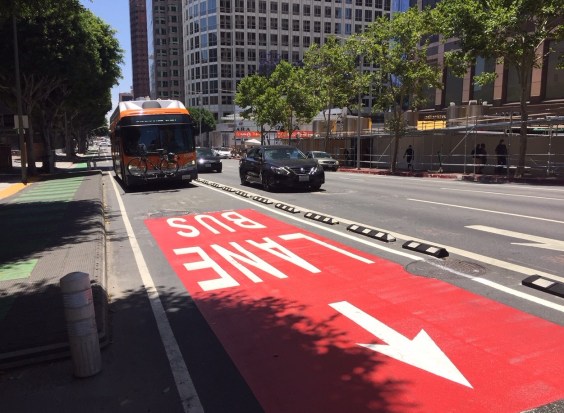The recent gas price spike has made many acutely aware of how much people depend on cars. Fractured communities, crisscrossed and divided by highways and parking lots, have made cars seem like the only reasonable transportation option in many communities. But car-dependent culture has a devastating impact on family budgets, even when gas is cheaper than it is today. It also forces people to endure traffic jams and related stress, while adding to a pollution crisis that is devastating to public health. Seven of the ten most polluted cities in the U.S. are in California, with Bakersfield, Fresno, Los Angeles, and the Bay Area topping the list.
The first solution that might come to mind to solve our volatile gas price and chronic pollution problems is transitioning to electric vehicles. But, even if we achieve the governor’s goal of 100 percent electric vehicle sales by 2035, almost a third of cars on California roads in 2045 will still be burning gasoline. And EVs won't solve congestion or safety problems.
The number of people killed by drivers nationwide while walking increased almost fifty percent over the last decade. Over 30,000 people were killed in car crashes in the first nine months of 2021, a surge of more than ten percent over the previous year - the largest increase since reporting on crashes began nearly half a century ago.
Shifting to electric cars won’t mend fractured communities, increase safety, or save people from agonizing commutes. In addition, car ownership just isn’t an option for many people, especially in low-income communities and communities of color that suffer the most from pollution.
We need something different. We need healthier, more affordable communities that are built for people, not cars.
Thankfully, California policy leaders are already looking at other ways - more than just electric cars - to address mobility. If California can increase community policies and investments that make communities walkable and bikeable, we can fix many of these issues. We can also stop ceding valuable property to parking lots and highways, and stop adding to existing maintenance deficits on miles and miles of land currently dedicated to moving and accommodating cars.
The problem is that the policies and plans we already have in place are not being implemented quickly enough, and they are sorely underfunded. The California Transportation Assessment identified an enormous gap between the state's climate-friendly vision for transportation and the reality that investments at the state and regional levels continue to focus on cars.
We have an opportunity to close this gap. The 2022 Climate Change Scoping Plan provides a critical window to leverage and align existing efforts and develop new solutions to improve our car-centric communities. But to do this, CARB needs to set bold goals to reduce the number of miles driven in our state. Targets and measures that make sustainable travel easier will put California on course to achieve climate, health, equity, and numerous other community sustainability goals.
Current and new investment opportunities can support these strong targets and implementation actions in the Scoping Plan that reduce the need to drive. The Climate Action Plan for Transportation Infrastructure sets a framework for prioritizing over $5 billion for projects that reduce climate pollution and dependence on driving. California’s Climate Investments support programs that do the same. And the new federal infrastructure legislation, slated to bring $550 billion for transportation and utilities in California over the next five years, opens up additional opportunities for reimagining how we move around in and build better communities.
We need policymakers to support all transportation options, including walking and bicycling, transit, and shared mobility. Now is the time to build a better, healthier California that is focused on people, not cars.
Roger Dickinson, former State Assembly Member, Sacramento County Supervisor and Executive Director of Transportation California, serves as CivicWell's Policy Director, where he provides legislative guidance and advocacy at the state and local levels.
Josh Meyer, Director of Community Design at CivicWell, has over 25 years of experience helping local leaders create vital places through healthy and sustainable transportation and land use policy, planning and project implementation.





